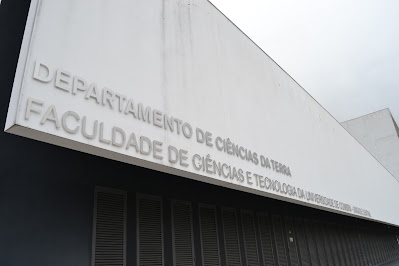El pasado lunes 3 de julio de este 2023, en la Facultad de Humanidades de la UNED, la ya doctora Ane de Celis defendió su memoria de tesis titulada "Macroevolutionary trends in the eusuchian and notosuchian lineages (Crocodyliformes)". El resultado, por supuesto, fue la obtención del título de Doctora en Ciencias, obteniendo además la calificación de Sobresaliente...
Esta tesis ha sido dirigida por Francisco Ortega e Iván Narváez, ambos de la Universidad Nacional de Educación a Distancia (UNED). La finalización de este proceso de doctoramiento por parte de Ane supone el reconocimiento al enorme esfuerzo y trabajo llevado a cabo en los últimos años en su labor de conocer de manera más ajustada cuales son los patrones macroevolutivos que están detrás de éxito evolutivo de los cocodrilos modernos y sus antecesores más recientes. Aquí tenéis el abstract de la tesis:
The evolutionary history of crocodyliforms, an archosaur group with a rich fossil record, spans from the Triassic to the present. However, only three clades of crocodyliforms survived after the K-Pg mass extinction event: dyrosaurids, eusuchians, and notosuchians.
This dissertation presents palaeodiversity studies for eusuchians and notosuchians and analyses which abiotic or sampling factors may be associated with palaeodiversity shifts in both clades. Palaeodiversity analyses in eusuchians reveal two palaeodiversity peaks, the first during the Paleogene and mainly related to the radiation of alligatoroids in North America. The second palaeodiversity peak, which is the largest, occurs during the middle-late Miocene and is associated with the diversification of alligatorids, crocodylids and gavialids, particularly in the proto-Amazonian of South America. Palaeotemperature is one of the most important factors controlling the palaeodiversity of the eusuchian group.
Regarding the notosuchians, the study of their palaeodiversity reveals that the interpretation of their palaeodiversity patterns is highly dependent on the age assigned to the fossils of the Adamantina Formation (Late Cretaceous, Brazil). These analyses also reveal that the notosuchian fossil record is biased due to a ‘Lagerstätte effect’ linked to the presence of a large number of notosuchian specimens from the Adamantina Formation.
Moving on to the following research topic covered in this dissertation, the palate is a structure of great importance for interpreting the evolutionary history of crocodyliforms. Therefore, the evolution of the palate has been studied in eusuchians from the Late Cretaceous to the present with geometric morphometrics. The study sample includes a large ontogenetic sample of skulls representing all extant crocodylian species and a sample of eusuchian fossils covering a large part of the evolutionary tree of the group.
Analyses show that basal eusuchians, crocodyloids, alligatoroids, and gavialoids occupy distinct areas of the palatal morphospace, and that differentiation between clades is more pronounced in the present than in the past. However, disparity was higher in the past, and analyses of morphospace occupation through time reveal a shift in the occupied area of the morphospace during the Cretaceous-Paleogene transition. Furthermore, analyses of morphological disparity suggest a decoupling event between taxonomic diversity and morphological disparity in the transition from the Cretaceous to the Paleogene. Analyses assessing the impact of phylogenetic and ecological constraints on palatal morphology revealed that the relative length of the rostrum is primarily correlated with dietary category, whereas suborbital fenestrae shape morphology, among others, is constrained by phylogeny and allows the segregation of these crocodylian clades in the palatal morphospace. Evolutionary allometry analyses show that palate shape is constricted by size in most eusuchian clades. The analysis of the ontogenetic sample of extant crocodylians reveals that the palatal morphology of extant clades seems to be segregated in morphospace at least from the juvenile stage onwards. The ontogenetic trajectories of extant crocodylians show that, while most share a similar trajectory, some taxa have distinct trajectories.
Finally, the analysis of most of the mitochondrial and nuclear nucleotide sequences available for all extant crocodylians (~26000 bp) has allowed the identification of sequences with poor phylogenetic utility. These sequences were filtered out, and the remaining mitochondrial and nuclear sequences were concatenated, accounting for ~17500 bp. The resulting BI and ML trees show fully solved phylogenetic relationships among all extant crocodylians and have high support values at the nodes. This molecular tree will be particularly useful for further use in macroevolutionary research.
Y para finalizar y como es tradición en estos eventos de enorme felicidad, algarabía y alboroto, al final del acto oficial de lectura y defensa de la tesis no pudo faltar la ya típica celebración. Sólo una cosa más: ¡enhorabuena Ane!
-----
Más información:
-
Referencia: de Celis Ruiz, A. 2023. Macroevolutionary trends in the eusuchian and notosuchian lineages (Crocodyliformes). Tesis Doctoral. UNED, Madrid.
-
Imágenes: Arriba, Ane al comienzo de la defensa de su tesis; abajo, la ya doctora junto a sus directores y a los miembros de tribunal instantes después de dar por concluido el acto.


























































- Síguenos en Twitter
- "Síguenos en Facebook
- RSS
Contacto